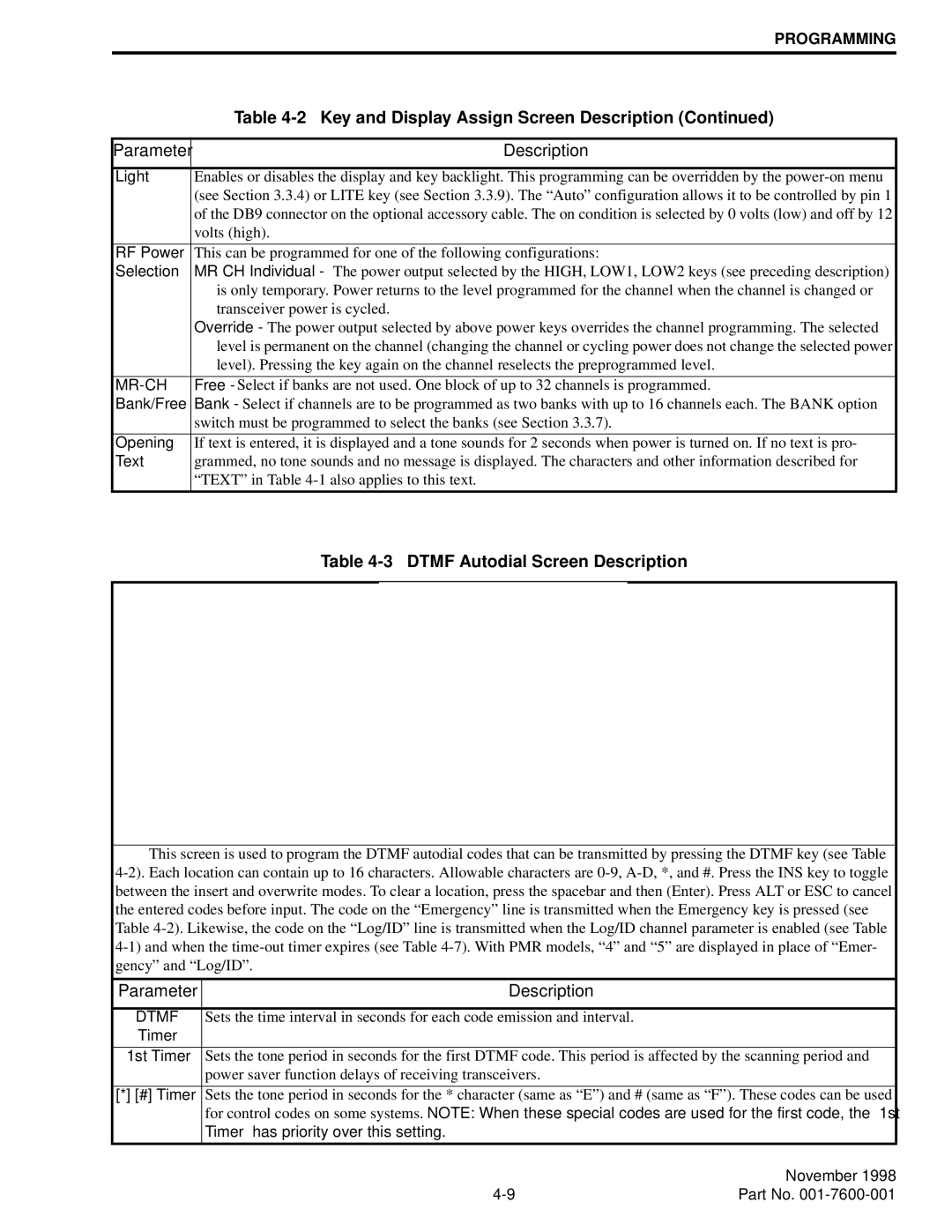
PROGRAMMING
| Table |
|
|
Parameter | Description |
|
|
Light | Enables or disables the display and key backlight. This programming can be overridden by the |
| (see Section 3.3.4) or LITE key (see Section 3.3.9). The “Auto” configuration allows it to be controlled by pin 1 |
| of the DB9 connector on the optional accessory cable. The on condition is selected by 0 volts (low) and off by 12 |
| volts (high). |
|
|
RF Power | This can be programmed for one of the following configurations: |
Selection | MR CH Individual - The power output selected by the HIGH, LOW1, LOW2 keys (see preceding description) |
| is only temporary. Power returns to the level programmed for the channel when the channel is changed or |
| transceiver power is cycled. |
| Override - The power output selected by above power keys overrides the channel programming. The selected |
| level is permanent on the channel (changing the channel or cycling power does not change the selected power |
| level). Pressing the key again on the channel reselects the preprogrammed level. |
|
|
Free - Select if banks are not used. One block of up to 32 channels is programmed. | |
Bank/Free | Bank - Select if channels are to be programmed as two banks with up to 16 channels each. The BANK option |
| switch must be programmed to select the banks (see Section 3.3.7). |
|
|
Opening | If text is entered, it is displayed and a tone sounds for 2 seconds when power is turned on. If no text is pro- |
Text | grammed, no tone sounds and no message is displayed. The characters and other information described for |
| “TEXT” in Table |
|
|
Table 4-3 DTMF Autodial Screen Description
This screen is used to program the DTMF autodial codes that can be transmitted by pressing the DTMF key (see Table
Parameter | Description |
|
|
DTMF | Sets the time interval in seconds for each code emission and interval. |
Timer |
|
|
|
1st Timer | Sets the tone period in seconds for the first DTMF code. This period is affected by the scanning period and |
| power saver function delays of receiving transceivers. |
[*][#] Timer Sets the tone period in seconds for the * character (same as “E”) and # (same as “F”). These codes can be used for control codes on some systems. NOTE: When these special codes are used for the first code, the “1st Timer” has priority over this setting.
| November 1998 |
Part No. |
